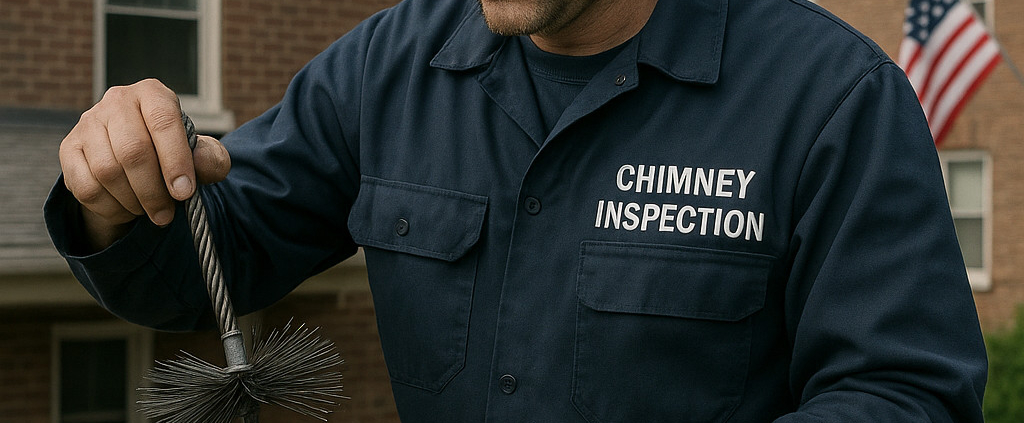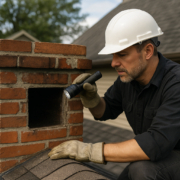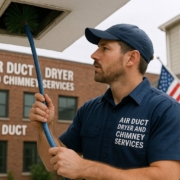How Chimney Inspections Affect Home Insurance
When it comes to protecting your property, homeowners often focus on alarms, locks, and regular maintenance—but many overlook the impact of chimney care on their insurance policy. Insurance providers evaluate several factors before approving or renewing a homeowner’s policy, and chimney condition is one of them. Failing to properly maintain your chimney can increase your risk profile, lead to higher premiums, or even result in claim denials after a fire. That’s why understanding the connection between home insurance and chimney inspections is essential. At the heart of it all is the need for a documented, professional Chimney Inspection.
Why Does Chimney Inspection Matter for Insurance Providers?
Insurance companies base their risk assessments on the likelihood of property damage or fire. Chimneys, particularly in homes with wood-burning fireplaces or stoves, are among the most common sources of house fires. When a chimney is not regularly inspected, it may accumulate creosote, experience structural damage, or suffer from poor draft all of which can lead to fire hazards or carbon monoxide issues. Insurance adjusters and underwriters view regular inspections and cleaning as a necessary part of home safety. A clean inspection report from a licensed chimney specialist helps insurers feel confident that the fireplace system is up to code, reducing potential liabilities and costs.
What Are the Most Common Chimney Issues That Affect Insurance Coverage?
Many insurance policies include specific clauses requiring homeowners to maintain certain features of their property—including chimneys. Below are the most common chimney-related problems that could lead to increased premiums or denied claims: excessive creosote buildup from incomplete combustion of wood; cracked flue liners that allow heat or smoke to escape into the walls; deteriorating mortar joints that compromise structural integrity; water intrusion from damaged caps or crowns; and unlined or improperly vented chimneys. These issues are not always visible to homeowners, which is why scheduling an annual chimney inspection is essential for protecting your home and ensuring full coverage.
What Are the Key Benefits of Chimney Inspections for Insurance Compliance?
Having a certified chimney inspection offers multiple benefits beyond just safety. It provides documented proof of chimney condition, which is often required by insurance companies. It can lower insurance premiums by reducing your risk profile. It ensures your chimney complies with local codes and NFPA standards. It identifies fire hazards before they cause costly incidents. And it supports future claims by demonstrating due diligence in home maintenance. Insurance companies may request chimney inspection reports during underwriting, after a claim, or during policy renewal—especially for older homes or homes with frequent fireplace use.
What Role Does Chimney Inspection Play in Risk Mitigation and Home Safety?
Risk mitigation is a core focus for both homeowners and insurance providers. A properly maintained chimney drastically reduces the risk of house fires, smoke damage, and structural failure.
“Regular chimney inspections are not only essential for fireplace safety but are increasingly seen as a critical part of home insurance compliance. Insurers want proof that homeowners are taking every reasonable step to reduce fire risk.”
Regular inspections also protect home occupants from carbon monoxide leaks, which can be fatal if undetected. Ultimately, chimney inspection plays a dual role: ensuring mechanical safety and supporting legal protection under your insurance policy.
What Is the Cost Breakdown for Chimney Inspection and Related Services?
Understanding the cost of chimney services helps homeowners plan for regular maintenance and remain in good standing with insurers. Below is a general pricing table for common services:
| Chimney Service | Average Cost (USD) | Details |
|---|---|---|
| Level 1 Inspection | $75 – $175 | Visual examination of accessible areas |
| Level 2 Inspection | $200 – $500 | Includes video scan and inspection report for insurance |
| Level 3 Inspection | $1,000 – $3,000+ | Invasive inspection involving removal of components |
| Chimney Cleaning / Sweep | $120 – $250 | Removal of creosote, soot, and debris |
| Minor Repairs (mortar, cap) | $250 – $750 | Spot fixes and leak prevention |
| Chimney Relining or Rebuild | $1,500 – $5,000+ | Required if liner is missing or severely damaged |
Disclaimer: Prices vary by location, chimney condition, access difficulty, and the licensed company performing the service. Always ask for a detailed estimate and read customer reviews before scheduling.
FAQs:
Q1: Is a chimney inspection required for homeowners insurance?
A1: In many cases, yes—especially if the home has a wood-burning fireplace or stove. Insurers may require proof of inspection during underwriting or renewal.
Q2: How often should I schedule a chimney inspection?
A2: At least once per year. Insurance providers typically expect annual inspections as part of routine maintenance.
Q3: Can a failed inspection affect my coverage?
A3: Yes. If your chimney is flagged for major safety concerns and no action is taken, your policy may be subject to cancellation or claim denial.
Q4: What type of inspection is best for insurance compliance?
A4: A Level 2 inspection with a video scan and formal inspection report is the most commonly accepted format.
Q5: Where can I find a certified inspection service near me?
A5: Search online for “chimney inspection near me” and look for companies with licensed professionals, strong reviews, and proper certifications.
Key Features:
Choosing the best chimney inspection company is essential for both safety and insurance compliance. Look for services that offer licensed and certified inspectors, detailed inspection reports that meet insurance requirements, flexible appointment scheduling, transparent pricing with estimates, strong customer reviews, emergency repair capabilities, and experience working with insurance adjusters. A professional, local, and reputable chimney service not only delivers quality work but also supports you in navigating insurance documentation and standards.
Read More: Chimney sweep










Leave a Reply
Want to join the discussion?Feel free to contribute!